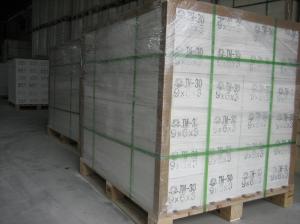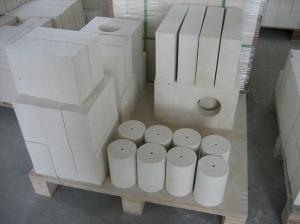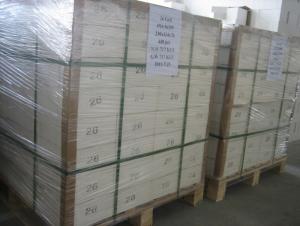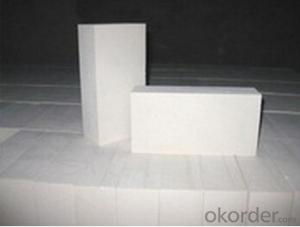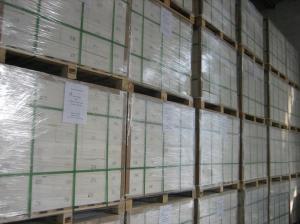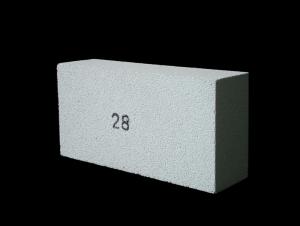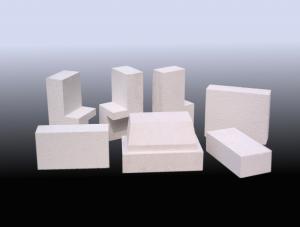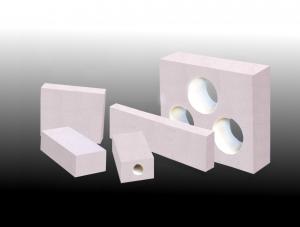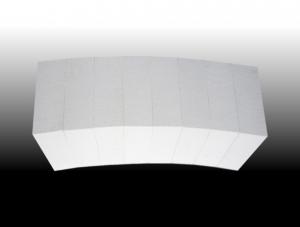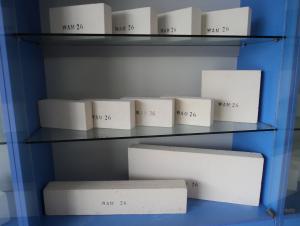Insulating Fire Brick - Refractory Mullite Insulating Refractory Brick JM 38
- Loading Port:
- Shanghai
- Payment Terms:
- TT OR LC
- Min Order Qty:
- 20 m.t.
- Supply Capability:
- 20 m.t./month
OKorder Service Pledge
OKorder Financial Service
You Might Also Like
Okorder series heat insulation brick
Okorder series thermal insulation brick is an effective, energy saving, low carbon, environmental protection advanced, according to the ASTM standard manufacturing products. Okorder series products have all kinds of materials in the field of metallurgy, industrial furnaces, aluminum, the best Li Ning petrochemical and insulation, electric power and glass ceramics. They can be used as part of an insulation or not to melt. Products have been widely used in the following furnace, achieved satisfactory results.
Application of heat preservation brick
Metallurgical Industry: blast furnace, hot blast furnace, heating furnace, etc..
Petrochemical Industry: ethylene cracking furnace, hydrogen furnace, the main furnace, heating furnace, etc..
Ceramic industry: roller kiln, kiln, etc..
Glass industry: glass furnace regenerator, etc.
Carbon industry: carbon furnace, etc..
Aluminum electrolysis industry: aluminum reduction cell, etc.
Other industries: tunnel kiln, shuttle kiln, etc..
Advantages of heat insulation brick
Low thermal conductivity: many air holes will bring good thermal insulation effect, energy saving.
High crushing strength: high crushing strength, volume stability.
Low heat storage: small heat storage, absorb more heat, energy-saving effect is obvious.
Chundu: High-speed Rail, low content of alkali metal impurities.
Accuracy: the size of the brick machining precision, cutting and grinding the special shape, speed up the brick.
Insulating brick
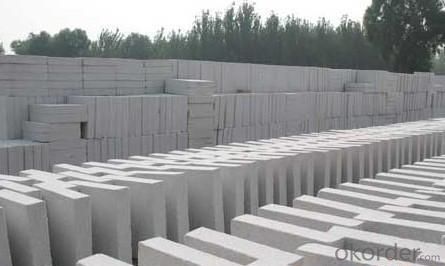
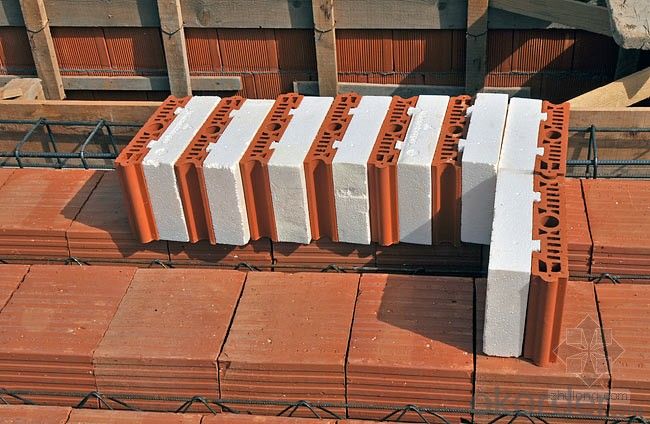
- Q: Can insulating fire bricks be used in the construction of refractory-lined vessels?
- Yes, insulating fire bricks can be used in the construction of refractory-lined vessels. Insulating fire bricks are specifically designed with low thermal conductivity, which makes them ideal for applications where insulation is required. In the construction of refractory-lined vessels, insulating fire bricks are often used in the outer layers of the lining to provide insulation and reduce heat loss. This helps to improve energy efficiency and maintain high temperatures inside the vessel. However, it is important to note that insulating fire bricks may not be suitable for all parts of the refractory lining, especially in areas where high mechanical strength or resistance to chemical attack is required. In such cases, other types of refractory bricks may need to be used.
- Q: Can insulating fire bricks be used in residential applications, such as fireplaces or ovens?
- Yes, insulating fire bricks can be used in residential applications such as fireplaces or ovens. Insulating fire bricks are designed to withstand high temperatures and provide excellent insulation, making them suitable for use in these applications. They help retain heat, improve energy efficiency, and enhance safety by preventing heat transfer to surrounding structures.
- Q: Are insulating fire bricks resistant to abrasion or wear?
- Yes, insulating fire bricks are resistant to abrasion or wear. These bricks are made from high-quality refractory materials, such as alumina or silica, which have excellent resistance to abrasion. The manufacturing process involves high-temperature firing, which strengthens the bricks and enhances their durability. Insulating fire bricks are specifically designed to withstand the harsh conditions of high-temperature applications, such as furnaces, kilns, and fireplaces. They are highly resistant to thermal shock, chemical erosion, and mechanical wear. This makes them a reliable choice for insulating and protecting the inner walls of these structures, ensuring long-lasting performance and minimizing the need for frequent replacements.
- Q: Can insulating fire bricks be used in fireplaces?
- Yes, insulating fire bricks can be used in fireplaces. They are designed to withstand high temperatures and provide excellent insulation, making them suitable for lining the inside of fireplaces.
- Q: Are there any construction waste materials for composite thermal insulation bricks?
- The strength products are made of high quality tabular corundum and mullite as aggregate, silicon carbide as matrix, additional special additive and a small amount of rare earth oxide to be mixed, and then formed by high pressure molding and high temperature sintering.
- Q: What is the typical lifespan of an insulating fire brick?
- The lifespan of an insulating fire brick can vary depending on several factors, such as the type and quality of the brick, the temperature and conditions it is exposed to, and the level of maintenance it receives. Insulating fire bricks are primarily used in industrial applications like kilns, furnaces, and fireplaces, where they are designed to withstand high temperatures and provide insulation. They are made from lightweight refractory materials that have excellent thermal insulation properties. When installed correctly and maintained regularly, insulating fire bricks can last for many years. However, factors like extreme temperatures, thermal cycling, chemical corrosion, and mechanical stress can cause gradual wear and tear over time, leading to a decrease in their lifespan. On average, the lifespan of insulating fire bricks ranges from 5 to 20 years. This range is quite wide due to the aforementioned factors. Bricks used in higher temperature applications or exposed to more severe conditions may have a shorter lifespan, while those in less demanding environments may last longer. To maximize the lifespan of insulating fire bricks, it is crucial to follow proper installation techniques, use bricks with the appropriate temperature rating for the specific application, and regularly inspect and maintain them. This involves checking for cracks, erosion, or any signs of deterioration and promptly addressing any issues to prevent further damage. Overall, while there is no definitive lifespan for insulating fire bricks, their longevity can be extended through proper care and maintenance. This allows them to effectively provide insulation and fulfill their intended purpose for a significant period of time.
- Q: Are insulating fire bricks resistant to flame spread?
- Insulating fire bricks exhibit exceptional resistance against flame propagation. Crafted with utmost precision, these bricks are tailored to endure extreme temperatures while effectively trapping and insulating heat. Constructed from refractory materials with minimal thermal conductivity, they possess remarkable capabilities in impeding heat transfer and thwarting the spread of flames. Widely employed in kilns, furnaces, and fireplaces, where maintaining and managing high temperatures is of paramount importance, these bricks' flame-resistant properties render them an unwavering and secure choice for such environments.
- Q: Do insulating fire bricks require any special tools for installation?
- No, insulating fire bricks do not require any special tools for installation. They can be easily installed using standard masonry tools such as a trowel and mortar.
- Q: Do insulating fire bricks require special installation techniques?
- Yes, insulating fire bricks do require special installation techniques. These bricks are designed to withstand high temperatures and provide insulation, so proper installation is crucial to ensure their effectiveness. Special attention needs to be given to factors such as mortar selection, brick alignment, and proper curing to achieve optimal thermal performance.
- Q: Are insulating fire bricks suitable for insulation in chemical reactors?
- Yes, insulating fire bricks are suitable for insulation in chemical reactors. These bricks are made of lightweight materials such as clay and have a high insulating property, which helps to minimize heat loss and maintain stable temperatures inside the reactor. Additionally, they are resistant to thermal shock and can withstand high temperatures, making them an ideal choice for insulation in chemical reactors.
Send your message to us
Insulating Fire Brick - Refractory Mullite Insulating Refractory Brick JM 38
- Loading Port:
- Shanghai
- Payment Terms:
- TT OR LC
- Min Order Qty:
- 20 m.t.
- Supply Capability:
- 20 m.t./month
OKorder Service Pledge
OKorder Financial Service
Similar products
Hot products
Hot Searches
Related keywords

















